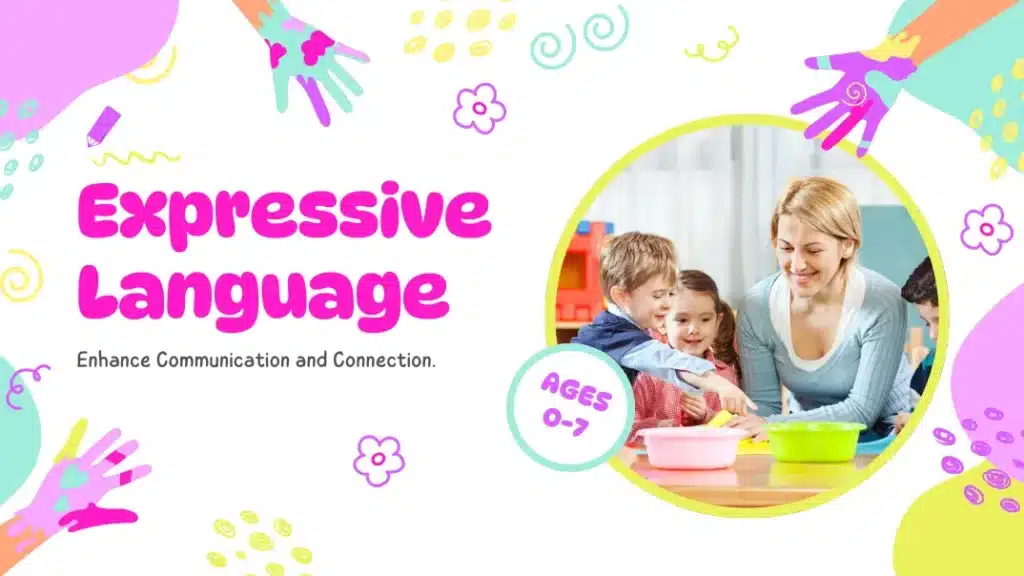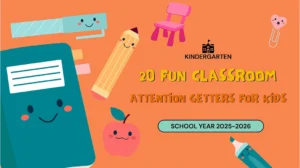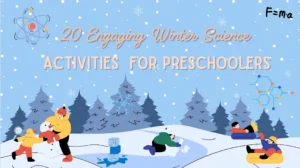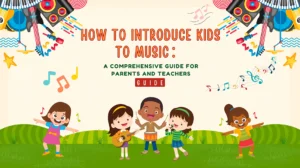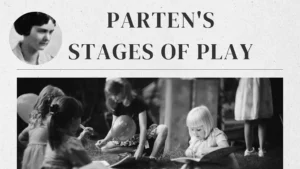Many parents notice an interesting gap in their child’s communication: they seem to understand far more than they can express. A toddler might follow multi-step directions but struggle to form a simple sentence. This difference often points to the development of expressive language, one of the most essential components of early communication.
Expressive language refers to a child’s ability to use words, gestures, facial expressions, and sentence structures to share thoughts, feelings, needs, and ideas. It is what allows children to ask questions, tell stories, describe experiences, and engage meaningfully with the world around them. Strong expressive language skills build the foundation for social interaction, academic success, and emotional connection.
Understanding how expressive language develops — and what signs might suggest a delay — is key for parents, caregivers, and educators. Early identification and support can make a significant difference, helping children build confidence and communicate effectively as they grow.
In this article, we will explore what expressive language is, how it differs from receptive language, the stages of its development, common challenges children may face, and practical strategies to support strong communication skills at home and in the classroom.
What is Expressive Language?
Expressive language is the set of skills and processes that allow a person to convey thoughts, needs, feelings, ideas, and information to others. It encompasses the words we choose, the sentences we form, the intonation and rhythm of our speech, our gestures and facial expressions, and our ability to write, type, or otherwise produce symbolic communication.
Expressive language is distinct from receptive language, which is a child’s ability to understand words, sentences, and nonverbal cues. Both matter, and they influence one another. A child might understand a lot but still struggle to produce words, or the reverse can be true: a child might talk a lot but misunderstand complex directions.
As children grow, their expressive language skills become more complex. From cooing and babbling as infants to full conversations in their preschool years, expressive language is a critical milestone in child development.

Importance of Expressive Language
Expressive language is essential to a child’s overall development. It forms the foundation for learning, social interaction, emotional understanding, and future academic success. When children can effectively express their thoughts, needs, and emotions, they are better equipped to navigate the world around them, build relationships, and develop confidence.
- Learning and Classroom Participation: A child’s ability to express what they know is just as important as understanding new information. Expressive language allows children to answer questions, participate in group discussions, describe what they’ve learned, and ask for help. When a child can’t explain their thinking or share ideas, teachers may misjudge their true understanding.
- Social Development: Friendships depend on the ability to talk, share, and respond appropriately. Children with strong expressive skills are more likely to join play, negotiate rules, and resolve conflicts with words. On the other hand, children who struggle to express themselves may feel left out, become frustrated, or rely on behavior to communicate.
- Emotional Growth and Self-Regulation: Being able to label emotions like “mad,” “sad,” or “scared” is a powerful tool for self-regulation. When a child can say, “I’m upset because he took my toy,” adults can help solve the problem, and the child learns problem-solving and coping strategies. Expressive language gives children a voice for their inner world.
- Confidence and Independence: Expressive language builds confidence. Children who feel heard and understood are more willing to speak up in class, take initiative, and try new things. This confidence carries into reading, writing, and independent thinking. As one American preschool teacher put it, “Kids who can tell you what they want are kids who believe what they say matters.”
In early childhood, expressive language influences a child’s self-esteem and confidence. Children who struggle with expressing themselves may experience frustration, which could lead to behavioral issues or difficulty in social interactions. Developing strong expressive language skills sets a child up for success in numerous areas of life.
Main Differences Between Receptive and Expressive Language
| Aspect | Receptive Language | Expressive Language |
|---|---|---|
| Definition | The ability to understand language and process it. | The ability to produce language to communicate thoughts or feelings. |
| Developmental Order | Receptive language develops first, followed by expressive language. | Expressive language typically develops after receptive language skills. |
| Examples | Following directions, understanding questions. | Asking questions, telling stories, expressing emotions. |
| Language Skills Involved | Comprehension, listening, recognizing words and phrases. | Speaking, writing, gesturing, and using complex sentences. |
| Challenges | Difficulty in understanding or processing spoken words. | Difficulty in using words or sentences to express thoughts clearly. |
| Therapeutic Approaches | Speech therapy, auditory training, comprehension exercises. | Verbal exercises, storytelling, language expansion activities. |
Expressive Language Milestones and Activities
Development of expressive language follows a generally predictable course, with wide individual differences. Below are typical milestones and suggested activities to stimulate growth at each stage. Note that milestone ranges are guidelines; children develop at different rates, and cultural and bilingual environments influence how skills appear.

0–6 Months
During the first six months of life, babies experiment with their voices and interact with caregivers through sounds, facial expressions, and eye contact. Although they are not yet using real words, these early sounds lay the foundation for later expressive language skills. At this stage, the focus is on vocal exploration and social engagement.
Developmental Milestones:
- Coos, gurgles, and vocalizes in response to caregivers.
- Uses different sounds to express pleasure or distress.
- Begins to imitate simple sounds and rhythms.
- Smiles reciprocally and uses simple gestures like opening mouth for feeding.
Recommended Activities:
- Responsive vocal play: mimic the infant’s coos and add new sounds.
- Face‑to‑face interactions: reduce background noise and make eye contact during feeding and play.
- Songs with exaggerated intonation.
- Narrate actions: “Now we change your diaper. Now we put on socks.” Even if infants can’t repeat, the language patterns build the scaffold.

6–12 Months
Between 6 and 12 months, infants begin to understand the rhythm of communication. They start babbling more clearly and may even produce their first words. Daily interactions and routines teach them to associate words with people or objects.
Developmental Milestones:
- Babbles use repetitive syllables like “ba-ba” or “da-da.”
- Understands simple routines and responds to names.
- Understands common words such as “no” or “bye-bye”
- Begins using gestures like pointing or waving
Recommended Activities:
- Name and point to objects around the house during interactions
- Read books with simple pictures and label everything clearly
- Encourage gesture use by combining them with speech (e.g., waving and saying “bye-bye”)
- Play sound imitation games like mimicking animal sounds or simple noises
- Play peek-a-boo and pause to encourage anticipatory vocalizing.

1–2 Years
This period marks a major leap in expressive language. Children begin using real words intentionally, label objects, and combine two words to express needs or observations. It is a critical stage for vocabulary growth and basic sentence formation.
Developmental Milestones:
- Says first meaningful words around 12 months
- Uses approximately 50–100 words by 18–24 months
- Begins combining two words (“want milk,” “go park”)
- Uses rising intonation to ask questions (“More?”)
Recommended Activities:
- Repeat and expand your child’s speech (“Dog” becomes “Yes, a brown dog”)
- Encourage naming of everyday items through play or during routines
- Offer choices to encourage expressive language (e.g., “Do you want the apple or banana?”)
- Read repetitive books that promote word recognition

2–3 Years
Children’s speech becomes clearer and more complex during this phase. They can form simple sentences, start using plurals and pronouns, and express preferences and emotions with words. Their vocabulary expands significantly during this time.
Developmental Milestones:
- Uses 2–4 word phrases consistently
- Begins using pronouns (I, me, you)
- Can name familiar objects and people
- Begins asking simple “what” and “where” questions
Recommended Activities:
- Ask your child to describe objects or events using full sentences
- Engage in pretend play to encourage storytelling and role-playing
- Use open-ended questions during daily activities to encourage conversation
- Read interactive books and encourage the child to fill in missing words or phrases

3–4 Years
Children begin to use longer, more grammatically correct sentences by age three to four and show early storytelling abilities. They ask more complex questions and can describe events and emotions with increasing detail.
Developmental Milestones:
- Speaks in full sentences (4–5 words)
- Uses “why,” “how,” and “when” questions
- Tells simple stories or describes events
- Begins using past tense and correct plurals
Recommended Activities:
- Encourage the child to tell a story using picture cards or daily events
- Play role-play games that require dialogue, such as “playing doctor”
- Use descriptive prompts (e.g., “Tell me about your toy”) to build complexity
- Introduce basic sequencing concepts with storybooks (“What happened first?”)
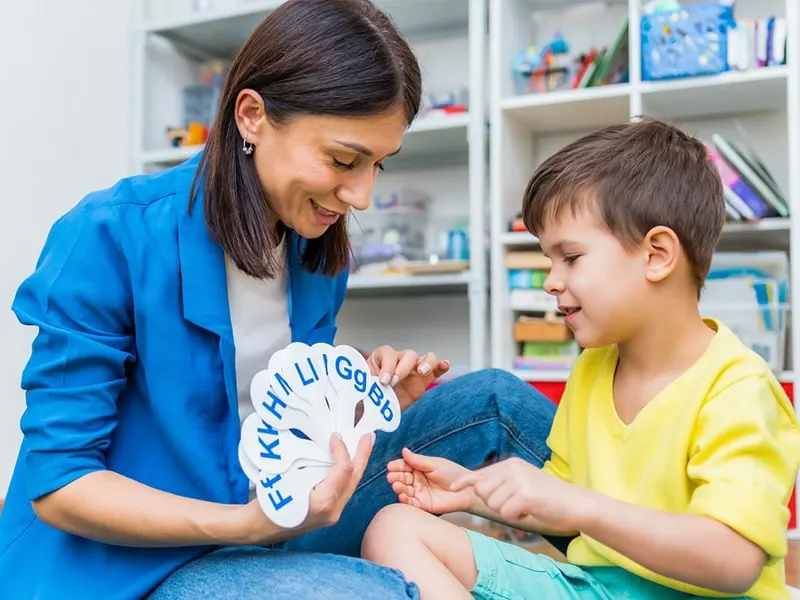
4–5 Years
At this age, expressive language becomes more refined. Children can narrate detailed stories, explain ideas, and follow complex conversations. Grammar improves significantly, and their use of language in social contexts expands.
Developmental Milestones:
- Uses complex and compound sentences
- Understands and uses time-related words (“yesterday,” “tomorrow”)
- Retells familiar stories in logical order
- Uses language for reasoning (“because,” “so”)
Recommended Activities:
- Ask your child to explain how things work (e.g., how to brush teeth)
- Practice “story-building” games where each person adds a sentence
- Read books with more developed narratives and discuss character actions
- Encourage journaling with drawings and dictated sentences

5–6 Years
Expressive language at this stage includes greater sophistication in storytelling and conversation. Children can explain abstract ideas, share detailed personal experiences, and adjust their language to different listeners and settings.
Developmental Milestones:
- Speaks clearly and uses adult-like grammar most of the time
- Uses language for different purposes (explaining, requesting, imagining)
- Understand the difference between real and pretend
- Begins understanding jokes and idioms
Recommended Activities:
- Engage in problem-solving conversations (“What would you do if…?”)
- Encourage discussions about feelings, plans, and ideas
- Introduce early writing activities with prompts (“Write about your favorite day”)
- Play games that involve describing, guessing, and reasoning

6–7 Years
By this age, children use expressive language confidently in academic, social, and practical settings. They communicate abstract thoughts, build persuasive arguments, and understand various tones and nuances in language.
Developmental Milestones:
- Tells coherent stories with a clear beginning, middle, and end
- Uses language to persuade or negotiate
- Understand metaphors and common expressions
- Adjusts language based on audience and context
Recommended Activities:
- Encourage structured storytelling with themes (e.g., adventure, mystery)
- Play debate-style games or opinion-based discussions
- Assign small presentations or storytelling challenges at home
- Explore poetry and wordplay to increase language flexibility

What Are the Basic Elements Needed to Develop Expressive Language?
Expressive language in children is made up of several building blocks that develop gradually over time. Each component contributes to a child’s ability to use language clearly and effectively. When one or more of these areas is delayed or underdeveloped, it can affect how well a child communicates their thoughts, needs, and emotions.
Vocabulary
Vocabulary is the collection of words a child knows and uses. In early childhood, children begin with single words like “ball” or “mama,” and quickly build up to hundreds of words by age three. A strong vocabulary allows children to describe, explain, ask questions, and engage in meaningful conversations.
Children with limited vocabulary may struggle to get their needs met or participate in learning. They might say things like “thing” or “that” instead of specific words, which can lead to frustration and misunderstandings.
Grammar
Grammar refers to the rules that help children put words together in the right order to form meaningful sentences. This includes things like using the correct verb tense (“She is eating” vs. “She eat”) or word order (“I want the toy” vs. “Want toy I”).
Grammar helps children speak clearly and be understood. When grammar is missing or incorrect, others may have a hard time figuring out what a child is trying to say.
Morphology
Morphology involves understanding how small parts of words—called morphemes—change the meaning. These include prefixes, suffixes, and grammatical endings like -s for plurals, -ed for past tense, and -ing for ongoing actions.
Mastering morphology allows children to talk about more complex ideas. For example, the difference between “run,” “running,” and “ran” gives children the ability to talk about actions in different time frames.
Prosody
Prosody refers to the rhythm, tone, pitch, and intonation patterns in speech. It’s what helps us understand the difference between a question and a statement or hear excitement or anger in someone’s voice.
Prosody makes communication more engaging and meaningful. Children with flat or unusual tone might be misunderstood by peers or seem less interested in conversations, even when they are trying to connect.
Pragmatics
Pragmatics is how language is used in social settings. It includes turn-taking in conversation, using appropriate greetings, staying on topic, making eye contact, and understanding how to speak differently in different situations (like with a friend vs. a teacher).
Children with pragmatic language challenges may interrupt others, talk off-topic, or struggle to join group play. This can affect their ability to make and keep friends.

What is Expressive Language Disorder?
Expressive language disorder is a condition in which a child has difficulty putting words together, speaking in complete sentences, or expressing themselves clearly—even though they may understand spoken language well. It’s not about lack of intelligence; rather, it’s a specific language delay that affects how thoughts are verbalized.
Children with expressive language disorder might use limited vocabulary, speak in short or incomplete sentences, or struggle to recall words. This can impact their ability to interact socially, perform academically, and express emotions. Causes range from developmental delays to neurological factors; early diagnosis is essential.
While some children may outgrow early language delays, others benefit greatly from speech therapy, structured language-building activities, and consistent support at home. Recognizing signs early, such as frustration during communication or fewer spoken words than peers is key.
If you notice persistent challenges beyond the expected developmental window, it’s important to consult a speech-language pathologist for evaluation and guidance. With time and the right interventions, children with expressive language disorders can significantly improve their communication abilities.
Common signs of expressive language disorder include:
- Limited vocabulary for their age
- Difficulty forming grammatically correct sentences
- Struggles with verb tenses and sentence structure
- Omitting keywords in a sentence
- Trouble telling stories or relaying information
- Repeating phrases without variation (echolalia)

9 Tips to Develop Your Child’s Expressive Language Skills
Building a child’s expressive language is a day-by-day journey. It’s not about complicated exercises but everyday interactions that enrich vocabulary, encourage sentence building, and spark curiosity. Below are 9 powerful strategies to nurture expressive communication:
1. Read Books Aloud
Reading is one of the most effective ways to develop expressive language. Picture books with rich vocabulary, rhyming patterns, and engaging stories help children hear new words in context. Make reading interactive—ask your child to predict what will happen next, point to characters, or describe scenes in their own words. Storytime should be daily, cozy, and consistent.
2. Talk Often
Narrate your day, even during routine tasks. Explain what you’re doing and why, whether you’re cooking, cleaning, or driving. This will increase your child’s exposure to language and model how to express thoughts out loud. Use clear, descriptive words and pause to let your child respond or mimic your words.
3. Model Correct Language
Instead of correcting your child directly, model the correct form. For example, if they say “doggy run,” respond with, “Yes, the doggy is running fast!” This approach reinforces proper grammar without discouraging their efforts. Repeat keywords and expand their simple sentences to provide richer language input.
4. Ask Different Types of Questions
Use various question types: yes/no questions, “wh” questions (what, who, where, why), and open-ended prompts. This encourages different responses and helps children learn how to formulate sentences. For example, instead of asking, “Did you like the book?” try, “What was your favorite part of the story?”
5. Provide Some Choices
Offer your child choices throughout the day to encourage expressive responses. Instead of assuming their needs, ask, “Do you want milk or juice?” This simple act encourages them to use specific words and think about language as a tool for making decisions.
6. Play Some Music
Songs, rhymes, and chants help children develop rhythm and sound awareness. They also introduce repetitive language, which is easier to learn and recall. Sing action songs like “If You’re Happy and You Know It” to combine movement with language learning, reinforcing verbal patterns and coordination.
7. Do Fun Activities
Engage in crafts, cooking, puzzles, or any hands-on task that requires instruction-following and narration. Discuss the steps, materials, colors, and actions involved during these activities. This creates natural opportunities for children to hear and use descriptive language.
8. Give Them Time to Respond
After asking a question or prompting your child, pause and wait. Children often need extra time to find the right words or organize their thoughts. Avoid jumping in too quickly to finish their sentences. Waiting shows that their voice matters and encourages them to try.
9. Introduce New Vocabulary Daily
Choose a few new words each week and use them frequently in context. For example, if the new word is “enormous,” you might say, “Look at that enormous tree!” Encourage your child to repeat the word and try using it in a sentence. Use visuals or gestures to reinforce understanding.

What Activities Can Help Improve Expressive Language?
Practical, playful, and purposeful activities create the best environment for language development. Below are targeted activities that parents, caregivers, and educators can use to strengthen expressive language in children:
- Storytelling Games
Ask your child to tell you a story based on a picture or a sequence of images. This encourages narrative structure, vocabulary use, and creativity. You can start the story and have them continue, creating a back-and-forth dialogue that simulates real conversation. - Pretend Play
Engage in imaginative play, such as playing house, store, or doctor. Role-playing allows children to use language in different social roles and scenarios. It also helps them practice vocabulary related to specific themes (e.g., food, emotions, tools). - Show and Tell
Let your child bring a toy or item and describe it to others. Ask guiding questions like “What does it do?” or “Where did you get it?” This activity builds confidence in public speaking and helps organize thoughts into complete sentences. - Sequencing Cards
Use picture cards that show steps in a process (e.g., planting a flower). Ask your child to arrange them in order and explain what’s happening in each picture. This builds logical thinking, time-related vocabulary (first, then, next), and descriptive language. - Daily Journaling (with Pictures)
For older preschoolers or early elementary children, drawing a daily picture and then talking or writing about it helps reinforce language and self-expression. Ask questions about the drawing to prompt storytelling and detail. - Emotion Charades
Act out different emotions and have your child guess and describe them. Use words like “happy,” “frustrated,” “excited,” or “worried.” This helps build emotional vocabulary and expressive range. - Picture Description
Show your child an interesting picture and ask them to describe everything they see. Follow up with questions to expand their thinking: “Why do you think the girl is smiling?” or “What do you think will happen next?” - Interactive Reading
Rather than just reading a book straight through, pause, ask questions, encourage predictions, and relate the story to the child’s experiences. This interactive method deepens comprehension and expressive responses. - Guessing Games
Play games like “20 Questions” or “I Spy” to encourage descriptive language and reasoning. These activities challenge children to use words creatively and think aloud.
Frequently Asked Questions
- At what age should a child start speaking in full sentences?
Children typically begin speaking in full sentences by age 3, but every child develops at their own pace. If you have concerns about your child’s language development, consult a pediatrician or speech-language pathologist. - How can I tell if my child is struggling with expressive language?
Signs of difficulty in expressive language include not using words by 18 months, limited vocabulary at age 2, and trouble combining words into sentences by age 3. - Can bilingualism affect expressive language development?
Bilingual children may take longer to speak fluently in both languages, but research shows that bilingualism can enhance cognitive abilities and social skills. - Is it normal for a 2-year-old to use a limited vocabulary?
Yes, it’s normal for children to have a limited vocabulary at age 2, but they should be using at least 50 words and starting to combine two words into phrases. - How can I encourage my child to talk more?
Encourage your child to talk by asking open-ended questions, playing interactive games, and providing opportunities to express themselves through activities like drawing, role-playing, and storytelling. - When should I be concerned about my child’s language development?
Suppose your child is not meeting typical language milestones (such as not saying any words by 18 months or not using simple sentences by age 3). In that case, seeking advice from a speech-language pathologist may be helpful. - What causes expressive language difficulties in children?
Expressive language issues can result from various factors, including developmental delays, hearing impairments, neurological conditions, or lack of language exposure. Each child’s case is unique, so identifying the underlying cause with a professional is important. - Are bilingual children more likely to have expressive language delays?
Not necessarily. Bilingual children might temporarily mix languages or have a slightly slower start in each language, but they typically catch up. True expressive language delays affect both languages, not just one, and may still require assessment.
Conclusion
Training expressive language in early childhood is essential for a child’s communication, emotional expression, and cognitive growth. Parents and caregivers can significantly boost a child’s expressive language development through simple strategies like talking, reading, and encouraging play. By fostering an environment rich in language and offering consistent support, you can help children build the skills they need to thrive socially, academically, and emotionally.
Remember, each child develops at their own pace. With patience, practice, and a supportive environment, children will naturally expand their expressive language skills, setting them up for success in the future.

